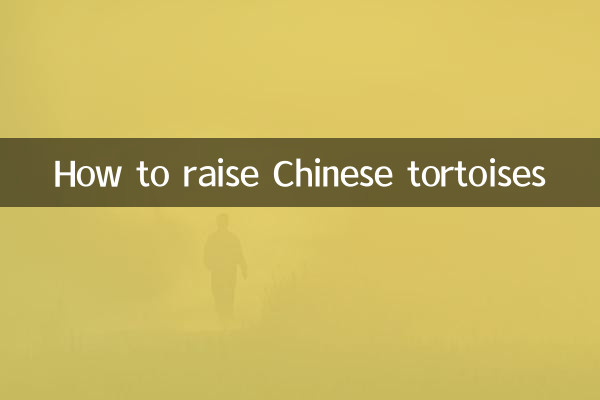How to raise Chinese tortoises
The Chinese tortoise (also known as the Chinese garden tortoise) is a common freshwater turtle that is loved by hobbyists because of its adaptability and easy maintenance. This article will give you a detailed introduction to how to scientifically raise Chinese tortoises from aspects such as the breeding environment, diet management, and health maintenance.
1. Breeding environment

Chinese tortoises do not have high requirements for the breeding environment, but for their healthy growth, you still need to pay attention to the following points:
| project | Require |
|---|---|
| water quality | Clean, chlorine-free, it is recommended to use sun-dried tap water or filtered water |
| water temperature | 22-28℃ (can be appropriately lowered to 15-20℃ in winter) |
| water depth | The water depth for young turtles should not exceed the height of the carapace, and it can be deepened appropriately for adult turtles. |
| basking area | A dry basking area must be set up with UVB lamps |
2. Diet management
The Chinese tortoise is an omnivorous animal and needs to pay attention to a balanced diet:
| food type | specific food | Feeding frequency |
|---|---|---|
| animal feed | Small fish, shrimp, earthworms, insects, etc. | 2-3 times a week |
| plant feed | Aquatic plants and vegetables (such as water spinach, lettuce) | Available daily |
| artificial feed | High quality turtle food | as complementary food |
3. Health maintenance
To keep your Chinese tortoise healthy, you need to pay attention to the following points:
| FAQ | Precautions |
|---|---|
| Nail rot | Keep the water clean and disinfect the breeding environment regularly |
| white eye disease | Avoid water pollution and provide basking area |
| digestive problems | Avoid overfeeding and maintain food variety |
4. Daily management tips
1.Change water regularly: It is recommended to replace 1/3 of the water volume every week to keep the water clean.
2.temperature control: If the water temperature is lower than 15℃ in winter, heating measures should be considered.
3.Lighting management: Provide 4-6 hours of UVB light every day to promote calcium absorption.
4.Observe behavior: Pay attention to the turtle's appetite and activities and detect abnormalities in time.
5.Preparing for hibernation: Adult healthy tortoises can hibernate naturally. Feeding needs to be stopped for 1-2 weeks before hibernation.
5. Feeding precautions
1. Avoid mixed breeding: Tortoises have a gentle personality, but excessive size differences may cause harm to each other.
2. Don’t play with it frequently: Excessive handling can cause stress reactions in turtles.
3. Use drugs with caution: When treating diseases, you need to consult professionals to avoid drug abuse.
4. Reasonable feeding: Young turtles can be fed once a day, and adult turtles can be fed once every 2-3 days.
5. Enrich the environment: aquatic plants, sunken wood, etc. can be appropriately arranged to increase the interest of the environment.
6. Key points of reproduction
1. Age of sexual maturity: Sexual maturity usually occurs in 3-5 years.
2. Breeding season: The peak breeding period is from April to June every year.
3. Spawning environment: A moist sandy spawning area needs to be prepared.
4. Incubation conditions: temperature 28-30°C, humidity around 80%, and the incubation period is about 60 days.
Through the above scientific feeding methods, your Chinese tortoise will be able to grow healthily and stay with you for many years. Remember, pet raising requires persistence and patience. Regular observation and timely adjustment of feeding methods can help your tortoise live better and longer.

check the details

check the details